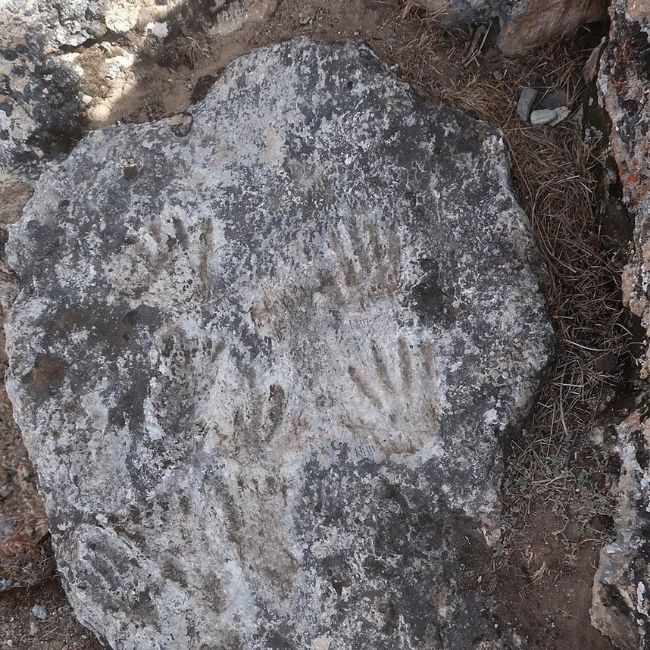
World’s Oldest Cave Art – Hand and Footprints of Children!
Recommended for Preparatory Grades
Perfectly preserved hands and footprints were found near the village of Quesang in Tibet. Researchers are calling this discovery the “World’s Oldest Cave Art – Hand and Footprints of Children!“
Hand and Footprints on limestone
Five handprints and five footprints were found in a neat row. Natural stone is a soft marble, that is formed by deposits from natural springs that harden over time. The perfectly preserved deformations were carved into the limestone. Because the footprints were small, the researchers think the child was seven years old. The handprints were those of a 12-year-old.
Parietal Art – World’s Oldest Cave Art!
The researchers at China’s Guangzhou University studied the “discovery” and found that it was made between 169,000 and 226,000 years ago. The researchers, who wrote about their findings say that the intentionally-made prints are the world’s oldest example of “parietal art”.
What is Parietal Art?
The refers to all prehistoric art that can’t be moved. It includes art on cave walls, floors, ceilings, and carved rocks.
Handprints – Uncommon
Researchers believe that “Handprints aren’t very common, because there aren’t many chances to leave behind a handprint while doing everyday things.” Moreover, they feel that “Human hand marks can be found in cave art at many places, but not nearly as early as this site”.
Who are Denisovans?
People who lived in Asia during the Paleolithic period.
What is Paleolithic period?
The Paleolithic Period, also known as the Old Stone Age, is an ancient period, or level, of human development defined by the use of simple, chipped stone tools.
Another thing that the discovery shows is that humans lived on the Tibetan Plateau a lot earlier than previously thought. It isn’t clear what kind of ancient humans lived there or how they got there. Based on the bones found in the area, they think they might have been Denisovans.
Be sure to check this interesting “Prehistoric Cave Art” Youtube video shared by “National Geographic”.
Curious Times is a place where we’re passionate about what we do. Consequently, we work hard every day to give our young readers the greatest possible experience and information. We also use Curious Times Weekly, The Curious Magazine, and My Expressions to communicate with our audience. As a result, our content is exciting and interesting for our readers.
Schoolchildren from all around the world appreciate and enjoy our materials. So, we’re always looking for ways to improve, and are curious to hear from you. This, above all, assists us in providing better service to you.
Thus, what sort of news stories capture your interest? In the comments section below? Please share your thoughts! For the simple reason that we enjoy hearing from our young readers. The following social media platforms allow you to communicate with us: WhatsApp, Instagram, Facebook, Youtube, Twitter, LinkedIn.
0 (Please login to give a Curious Clap to your friend.)
